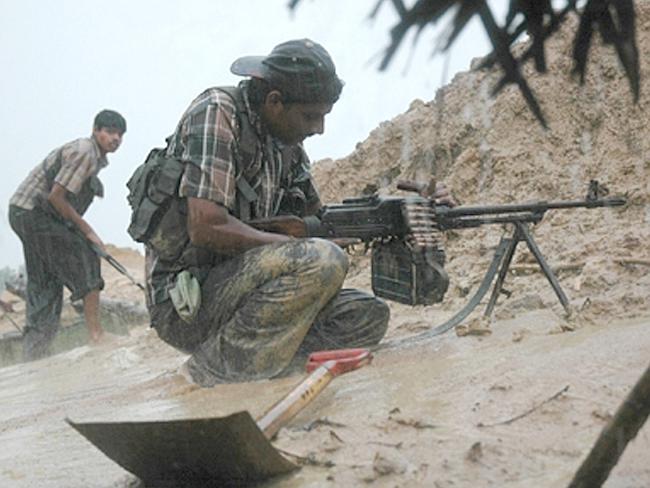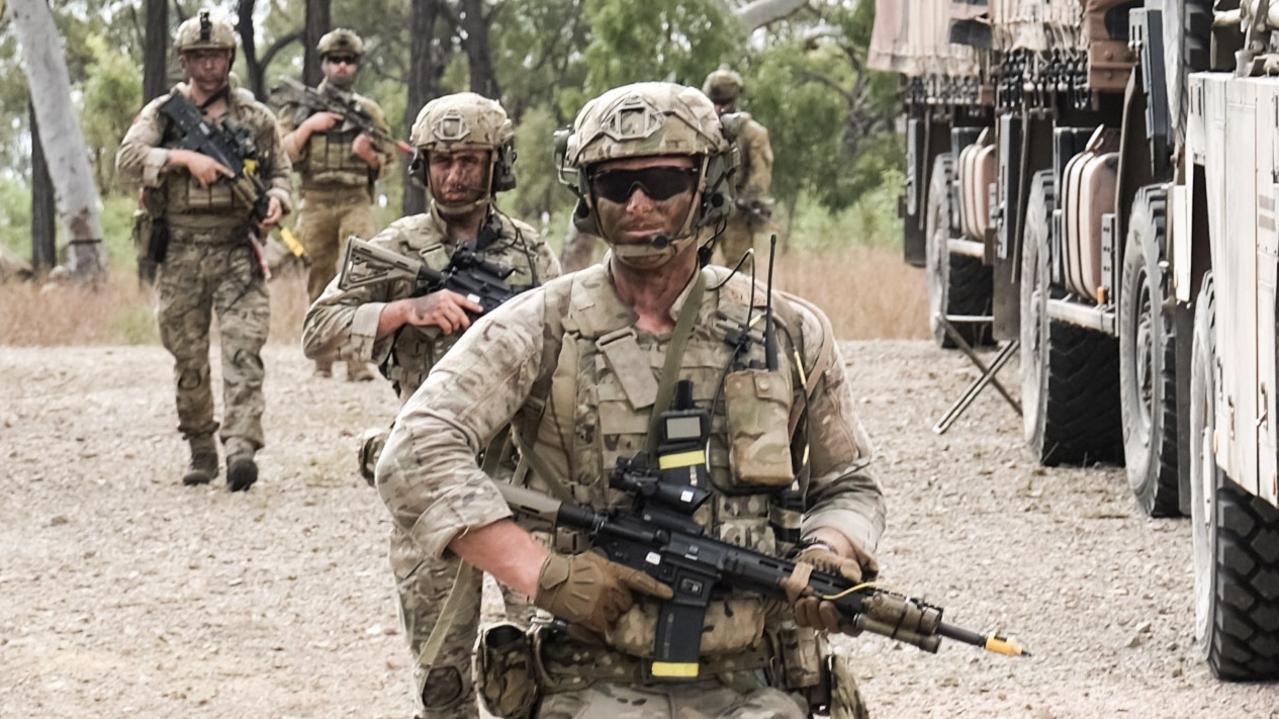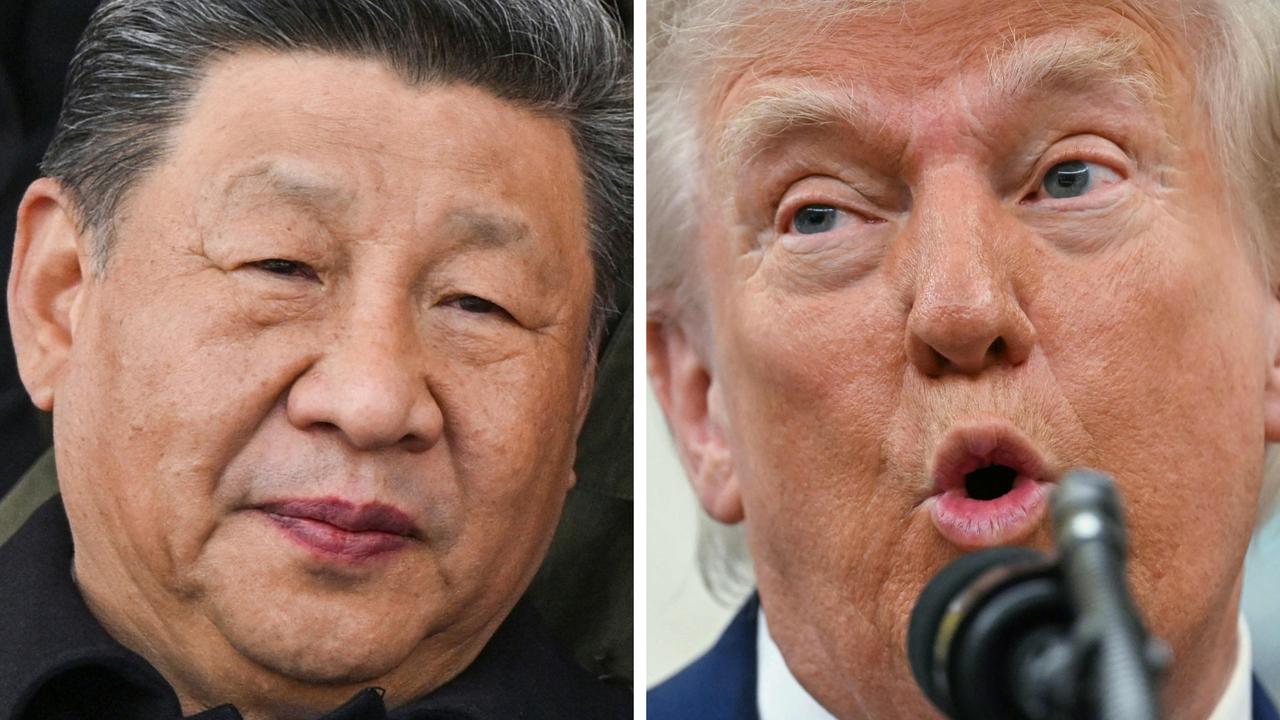Tamil asylum seekers choose self-immolation as despair over their future in Australia becomes overwhelming
A POWERFUL form of protest used for years in China, Vietnam and India has found its way to Australia. WARNING: Graphic images.
A POWERFUL form of protest used for many years in China, Vietnam and India has found its way to Australia — people setting themselves on fire.
The extreme act of suicide — known as self-immolation — has seen two Tamil asylum seekers set themselves alight in the past two months, with at least one of the men blaming his actions on being denied a visa to stay in Australia.
Warning: this story contains graphic images.
Shockingly, it is not the only time that someone has set themselves on fire in Australia.
In 2009, a Pakistani refugee died after setting himself alight outside Parliament House. An Ombudsman’s report into Shahraz Kayani’s case, found the Immigration Department was guilty of maladministration, after his wife and daughters were repeatedly denied permission to come to Australia because one of the children had cerebral palsy.
Although it has a centuries-long history in some cultures, the use of self-immolation as a modern protest tactic reportedly dates back to 1963 when a Buddhist monk set himself on fire in a busy Saigon street.
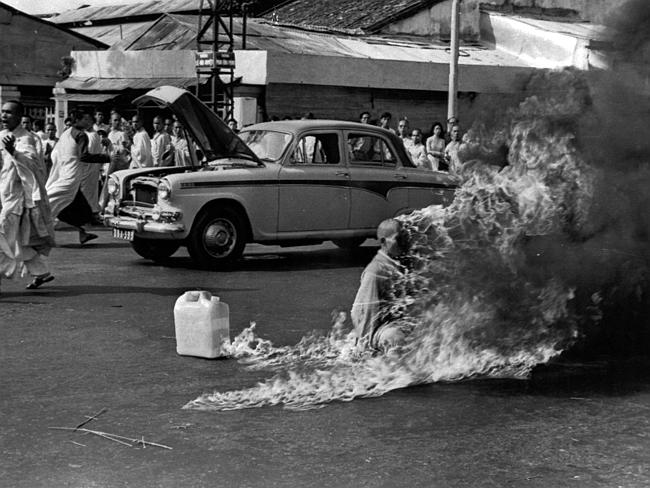
“When someone stands up to violence in such a courageous way, a force for change is released,” Vietnamese monk Thich Nhat Hanh wrote in a book about immolation. “Accepting the most extreme kind of pain, he lit a fire in the hearts of people around the world.”
Thich Quang Duc was protesting against the South Vietnamese government’s discrimination against Buddhists and he even rang reporters so they could document his actions.
The shocking act was credited for sparking anti-war sentiment, contributing to a change in American foreign policy and the downfall of the government in South Vietnam.
US terrorism expert John Horgan, from the Centre for Terrorism and Security Studies, told AP in 2012 that self-immolation did not have the same negative associations as suicide bombings, but tended to generate the same amount of publicity.
“Self-immolation is an extraordinarily effective psychological tactic,” Mr Horgan said.
“Because self-immolation doesn’t result in the killing of innocent bystanders, it is often characterised as an extremely noble gesture, borne out of frustration and helplessness.”
For Buddhists, self-immolation is seen as a selfless act of sacrifice and experts see it as a calculated, desperate and powerful form of protest.
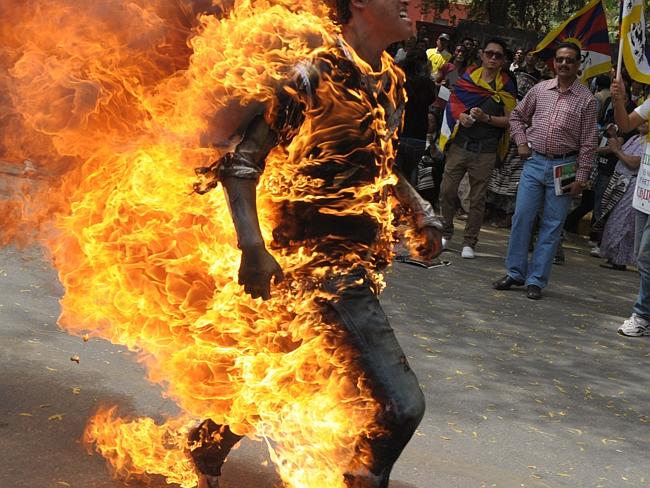
Self-immolation has been a feature of the Tibetan protests against Chinese rule in recent years, and helped spark the Arab Spring democracy.
In 1990, more than 100 students in India burned themselves in a protest against a caste-based policy.
The latest case in Australia has been blamed on the government’s treatment of Tamil asylum seekers.
Leo Seemanpillai, 29, set himself on fire in Geelong, Victoria, after waiting for more than a year to hear whether he could stay in Australia.
He died from his injuries, but Mr Seemanpillai was an organ donor and his death has benefited five Australians.
Tamil Refugee Council convener Trevor Grant said he was certain that Mr Seemanpillai’s depression over his refugee application had led to his drastic action.
“He knew he would probably be sent back to Sri Lanka ... despite the fact that he would probably be persecuted or taken to jail,” Mr Grant said.
“All Tamils I know are very fearful of being sent back ... the Sri Lankan president is on the record calling all asylum seekers traitors.”
Mr Seemanpillai was suffering from depression and was receiving mental health support from the government.
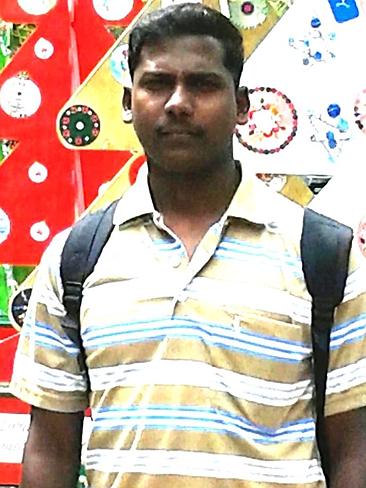
However, Immigration Minister Scott Morrison said that he had been visited by a caseworker the day before and showed no indication of “suicidal ideation”.
His claim for refugee status was also still being processed.
“There was no indication that he was being removed anywhere or that he hadn’t been found to be a refugee,” Mr Morrison told a press conference yesterday.
“This man sadly died as a result of a very serious set of injuries that were self-inflicted and I don’t think we are in any position, and frankly I don’t think anyone else is in a position to draw any conclusions about what is in a person’s mind in that situation.”
While the distinction between self-immolation and suicide has always been blurry, another case that happened in April was clearer.
Refugee Council of Australia president Phil Glendenning told ABC Radio yesterday that he had read the suicide note of the first man who set himself on fire in Sydney.
This man self-immolated after receiving a letter telling him his application for refugee status had failed.
Mr Glendenning said the man’s note described Australians as a “very kind people”.
“Basically he wanted to die in this country, a good country, rather than die in Sri Lanka, and he didn’t want his parents to be told, because he wanted them to believe that he was safe and secure in Australia,” he said.
The man received burns to most of his body but there is hope he will survive.
Why is self-immolation happening in Australia?
Mr Grant has pointed to the Immigration Minister’s comments in October that suggested that those seeking asylum from Sri Lanka would not be resettled in Australia.
Mr Morrison said then: “Anyone who may have come from Sri Lanka should know that they will go back to Sri Lanka.
“We have an arrangement with the Sri Lankan government and … we’ll be ensuring that we maximise those who go back and, preferably, they will all go back”.
But in an interview with Sky News yesterday, Mr Morrison said his comments were referring to a vessel that had just arrived.
“In that specific case I think there were 79 people on that vessel and all 79 after being screened out went back. That was the lived experience,” Mr Morrison said.
“My comments were not being directed to people who were already here, of course the processing continues as it should and I would like to get on with that processing.”
Mr Seemanpillai was already in Australia at the time of his comments, but when asked whether he accepted that Sri Lankans may have been dwelling on the comment, Mr Morrison said: “That position has not been represented to me over the last several months. It has only been put to me today in the context of that incident on the weekend and frankly it has been put in a political context and I think that was very unfortunate”.
Mr Grant said there had been a widespread fear among members of the Sri Lankan community that they would be sent back regardless of their circumstances.
Australia’s treatment of Sri Lankan arrivals is different from other asylum seekers and a report from the Human Rights Law Centre criticises the policy for being based on a “politically expedient assumption” that the arrivals are all “economic migrants”.
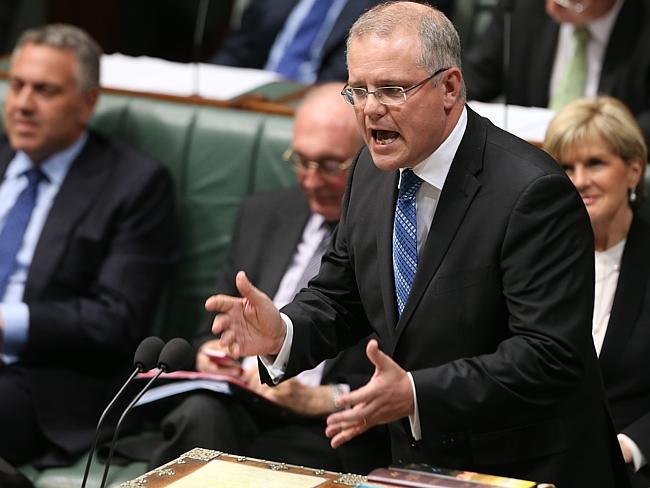
Sri Lankans are the only national group subject to “enhanced screening”, which means that arrivals can be interviewed without access to legal advice, which denies them a “fair and thorough assessment process”, the report said.
The Australian government also works closely with its Sri Lankan counterpart and provides substantial funds, including $2 million for its navy, to intercept boats attempting to leave.
Are people fleeing from Sri Lanka “economic migrants”?
Highly educated and ambitious, Tamils from the north and east of Sri Lanka have a history in the country that could stretch back 1000 years, according to Australian National University adjunct Professor James Jupp.
Professor Jupp said the Tamils had always been an “emigrating people” as their homeland in south India is quite dry and not very fertile.
They gradually settled in Sri Lanka and many of them were educated in missionary schools. While the country was under British colonial rule, they enjoyed high-ranking jobs in the government because of their education.
But once the British left, the new government, controlled by the majority Sinhalese population passed laws that curtailed their access to these sought after jobs.
This led to the rise in 1983 of the militant group the Tamil Tigers who wanted an independent Tamil state but were brutally quashed by the government after a 26 year civil war.

This group was mainly supported by the educated Tamils in the north and east, not the lower-caste Tamils who were brought in to work as labourers on tea plantations in the 1800s and were mainly illiterate.
Professor Jupp said after the war many educated Tamils felt the did not have a future in the country.
There has also been reports of continuing abuses in Sri Lanka.
During a visit to the country last year Prime Minister Tony Abbott said Sri Lanka was “more free and prosperous” since the end of the civil war.
But Refugee Council of Australia president Phil Glendenning told ABC Radio yesterday that a UN Human Rights Council investigation launched recently was looking into continuing disappearances and killings.
“We know that in previous years at least, nine asylum seekers who were returned were killed,” Mr Glendenning said.
He claimed 1200 people had been sent back since last October, some of them had been put in prison and others had disappeared.
News.com.au tried this morning to contact Mr Morrison for comment about this but has not yet received a response.
Amnesty International has also highlighted continuing abuses in the country, which it says has become entrenched in the system, despite the end of a 26 year civil war.
“The war was once used as an excuse to detain people without evidence or warrants and hold them for years. Today, criticism of government policies could earn you the same treatment,” Amnesty says on its website.
For support and information about suicide prevention, contact Lifeline on 13 11 14 or Suicide Call Back Service on 1300 659 467.
